
USS United States was a wooden-hulled, three-masted heavy frigate of the United States Navy and the first of the six original frigates authorized for construction by the Naval Act of 1794. The name "United States" was among ten names submitted to President George Washington by Secretary of War Timothy Pickering in March of 1795 for the frigates that were to be constructed.Joshua Humphreys designed the frigates to be the young Navy's capital ships, and so United States and her sisters were larger and more heavily armed and built than standard frigates of the period. She was built at Humphrey's shipyard in Philadelphia, Pennsylvania and launched on 10 May 1797 and immediately began duties with the newly formed United States Navy protecting American merchant shipping during the Quasi-War with France.

USS Minnesota was a wooden steam frigate in the United States Navy. Launched in 1855 and commissioned eighteen months later, the ship served in east Asia for two years before being decommissioned. She was recommissioned at the outbreak of the American Civil War and returned to service as the flagship of the North Atlantic Blockading Squadron.
USS Ganges was a man-of-war in the United States Navy during the Quasi-War with France.

John Randolph Tucker, an American naval officer who served in the navies of three nations. He was a commander in the United States Navy, captain in the Confederate States Navy, and rear admiral in the Peruvian Navy. As president of the Peruvian Hydrographic Commission of the Amazon, he contributed to the exploration and mapping of the upper Amazon Basin.
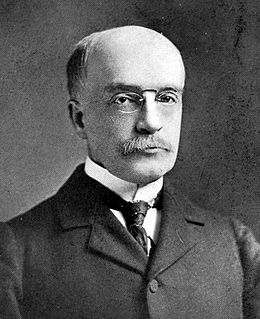
John Bach McMaster was an American historian.
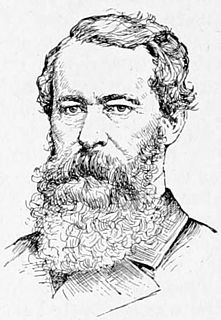
Tunis Augustus Macdonough Craven was an officer in the United States Navy. His career included service in the Mexican–American War and the American Civil War.

Thomas Tingey was a commodore of the United States Navy. Originally serving in the British Royal Navy, Tingey later served in the Continental Navy. Tingey served with distinction during the Quasi-War and served as the commandant of the navy yard until his death.
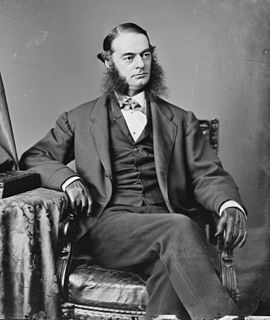
Clarkson Nott Potter was a New York attorney and politician who served in the United States House of Representatives.
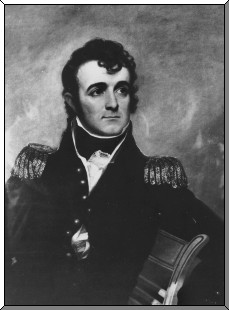
Joseph Gardner Swift was an American soldier who, in 1802, became the first graduate of the newly instituted United States Military Academy in West Point, New York; he would later serve as its fourth Superintendent from 1812 to 1814, and as Chief of Engineers of the United States Army from 1812 to 1818.

USS Tingey (TB-34), was a Blakely-class torpedo boat of the United States Navy. She was the first of three ships to be named for named after Commodore Thomas Tingey.
Thomas Tingey Craven may refer to:
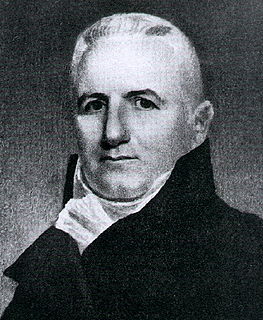
Edward Cutbush was born in Philadelphia. He graduated from the University of Pennsylvania in 1794, where he was resident physician of the Pennsylvania Hospital from 1790 to 1794. Cutbush was surgeon general of the Pennsylvania militia during the 1794 Whiskey Rebellion.

Rear Admiral Henry Kuhn Hoff was a United States Navy officer. During his long career, he took part in combat in Sumatra and in the American Civil War.

Alfred Wingate Craven was a chief engineer of the Croton Aqueduct Department, was a founding member—and host of its initial meeting—of the American Society of Civil Engineers and Architects, which later became the American Society of Civil Engineers (ASCE).
Charles Henderson Craven was an officer of the United States Navy.

Thomas Tingey Craven was a United States naval officer with service in World War I and World War II and rose to the rank of vice admiral.

Thomas Tingey Craven was a 19th-century United States Navy officer who rose to prominence during the Civil War.
Craven is the surname of:

Jonathan Mayhew Wainwright II was an officer in the United States Navy during the American Civil War, who was killed in action during the Battle of Galveston.

Tingey House, officially known as Quarters A, is the official residence of the Chief of Naval Operations of the United States Navy. Built in 1804, it is located at the Washington Navy Yard in Washington, D.C., and is part of the Yard's historic Officers Quarters. The residence is known as Tingey House in honor of its first resident, former U.S. Navy officer Thomas Tingey. According to popular legend, Tingey's ghost haunts the property.
The public domain consists of all the creative work to which no exclusive intellectual property rights apply. Those rights may have expired, been forfeited, expressly waived, or may be inapplicable.

James Grant Wilson was an American editor, author, bookseller and publisher, who founded the Chicago Record in 1857, the first literary paper in that region. During the American Civil War, he served as a colonel in the Union Army. In recognition of his service, in 1867, he was nominated and confirmed for appointment as a brevet brigadier general of volunteers to rank from March 13, 1865. He settled in New York, where he edited biographies and histories, was a public speaker, and served as president of the Society of American Authors and the New York Genealogical and Biographical Society.

John Fiske was an American philosopher and historian.



























